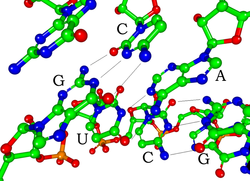By Vijay Jayaraj
When it comes to global energy policy, few narratives are as instructive — and as cautionary — as Europe’s.
Why?
Their ill-fated experiment with wind and solar energy.
The continent’s self-inflicted woes contain lessons that should be taken to heart by those formulating U.S. energy strategy for the incoming administration.
Europe’s Misplaced Trust in Wind and Solar
Europe’s embrace of weather-dependent power generation, particularly in Germany and the United Kingdom, was a profound miscalculation.
These nations embarked on an ambitious energy transformation, predicated on the assumption that wind and solar could replace traditional fossil fuels. The result has been a catastrophe, as predicted by many.
Germany, often celebrated as the champion of “renewable” energy, should be crowned king of incompetence.
The country’s heavy investment in wind and solar has not only failed to deliver promised reductions of carbon dioxide emissions — the bogeyman of climate alarmists — but also has destabilized its once robust industrial economy.
Germany’s manufacturing sector — historically, the economic powerhouse of Europe — has been brought to its knees, with energy costs rendering many industrial processes economically unviable.
Reporting on prices in the second week of December, Robert Bryce says that “Germany’s wholesale power market came close to $1,000 per megawatt-hour, the highest level in 18 years.”
The fundamental problem lies in the inherent unpredictability of renewable sources.
Wind power demonstrates acute vulnerabilities during critical periods.
Winter presents a perfect storm of challenges: Reduced wind generation coincides with peak energy demand, creating grid instability, and heightened risk of blackouts.
Additionally, so-called renewables are unreliable and expensive despite claims to the contrary.
The Myth of Levelized Cost of Energy
Policymakers and renewable energy advocates have long relied on Levelized Cost of Energy (LCOE) as the primary metric for comparing energy sources.
However, this misleading construct benefits only hucksters.
LCOE fails to account for the massive infrastructure investments, backup generation requirements and costs for grid stabilization associated with intermittent sources.
These make the true cost of wind and solar much higher than the advertised price and destructive to the economics of businesses and households.
“What we have in Europe is a disintegrating electric grid deliberately created by politicians who want to be seen as green as an emerald,” says Thomas Shepstone, a U.S. observer of energy markets.
“They have delivered, what can only be described as a green slime that threatens to engulf and smother them all.
“Electric prices are out of control, blackouts are approaching and yet, the ideologues want to press even harder.”
U.S. Must Avoid the European Disaster
The European experiment offers a clear warning: Ideological aspirations — especially like the “green” transition rooted in fevered ravings about a supposed climate crisis — must never supersede technological and economic realities.
The United States has an opportunity to chart a more responsible, pragmatic course — one that balances economic necessities and energy security with innovative technologies:
- Natural gas, made plentiful through hydraulic fracturing, already has not only lowered electricity prices but also provided a competitive edge to energy-intensive industries like chemicals, steel, and manufacturing.
- Highly vilified coal should be allowed to make a comeback with currently available technology — like that being used in Japan and elsewhere — to reduce emissions to harmless levels.
- Nuclear power appears to be on the rise.
Policy Recommendations
To avoid replicating Europe’s mistakes, some things the United States should do are:
- Prioritize reliability and affordability in promoting energy sources.
- Encourage investment in grid resilience and away from wind and solar, especially in regions with harsh winters.
- Use realistic metrics for assessing energy costs.
- Make industrial competitiveness a primary consideration in developing energy policy.
The likelihood of the U.S. pursuing this line of thought is much enhanced by the election of Donald J. Trump, as the nation’s 47th commander in chief; although this matter is too important to take anything for granted.
This commentary was first published at Newsmax on January 7, 2025.
Vijay Jayaraj is a Science and Research Associate at the CO2 Coalition, Arlington, Virginia. He holds an M.S. in environmental sciences from the University of East Anglia and a postgraduate degree in energy management from Robert Gordon University, both in the U.K., and a bachelor’s in engineering from Anna University, India.
Related
Discover more from Watts Up With That?
Subscribe to get the latest posts sent to your email.









Leave a Comment